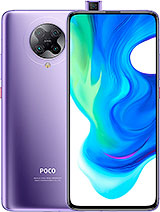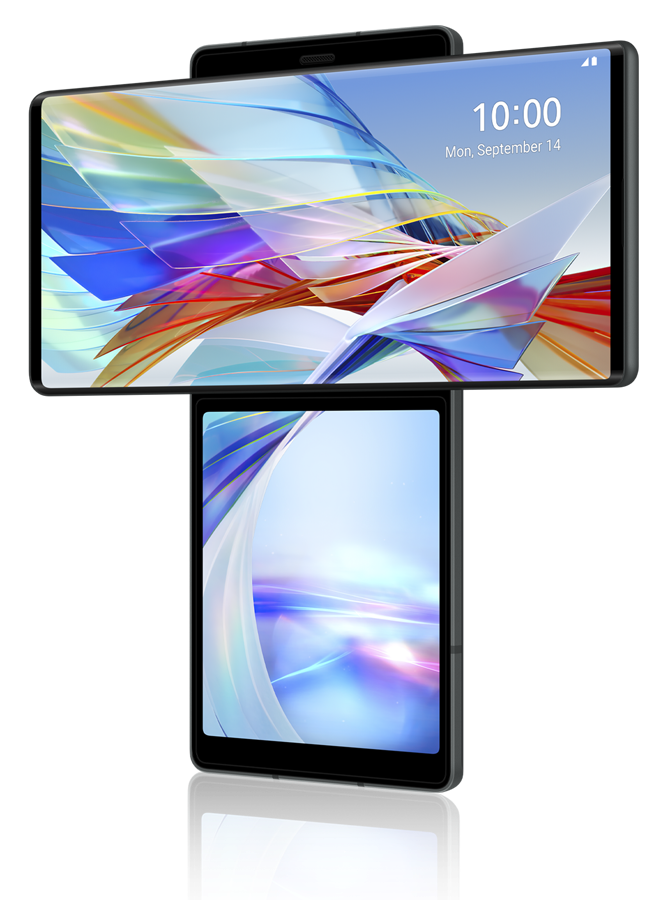Best 2020 flagships to get:

Samsung’s device, packs a very friendly price tag, currently going for under $500 on the likes of Amazon. It also brings some great fundamental specs to the table, such as a Snapdragon 865, a 4,500mAh battery.
You’re also getting a load of premium additions, namely water resistance, wireless charging, a 120Hz OLED panel, and a flexible rear camera system. In fact, perhaps the only major downside to this phone is that it lags behind rivals in the charging arena.
Samsung Galaxy S20 FE specs
Display: 6.5-inch, FHD+
SoC: Snapdragon 865
RAM: 6/8 GB
Storage: 128/256 GB
Cameras: 12, 12, and 8MP
Front camera: 8MP
Battery: 4,500mAh
Software: Android 10+

The LG V60 was the last conventional flagship by the Korean brand before it shuttered its smartphone business earlier this year. It was a pretty good device at the time of its release, but discounts make it one of the best older flagships to buy in 2021.
LG’s flagship phone packs a still-powerful Snapdragon 865 SoC, a huge OLED panel, a 5,000mAh battery that should keep you going for a while, and a headphone port with quad-DAC hardware. You’re also getting wireless charging and an IP68 rating as the cherries on top.
The V60 isn’t without its glaring omissions though, as it misses out on a telephoto camera while the lack of fast wired charging and a high refresh rate are disappointing in 2021 as well. Thankfully, these omissions are easy to forgive at a price of well under $500 these days. If you can find it.
LG V60 Specs
Display: 6.8-inch, FHD+
SoC: Snapdragon 865
RAM: 8 GB
Storage: 128/256 GB
Cameras: 64 and 13MP
Front camera: 10MP
Battery: 5,000mAh
Software: Android 10+

The OnePlus 8 series (and the OnePlus 8 Pro in particular) represented the Chinese brand embracing the premium flagship space. Both phones tout Snapdragon 865 processors, 120Hz OLED screens, and 30W wired charging capabilities, making for some solid core specs.
Get the Pro model and things take a major step up though, featuring an IP68 water-resistance rating, wireless charging, a QHD+ screen, and a 3X telephoto camera. Meanwhile, the standard OnePlus 8 has an FHD+ resolution but misses out on a zoom-focused camera and wireless charging. This model misses out on an IP68 rating unless you bought it from a carrier.
These phones have since received regular price drops and promotions. So if you like the idea of a high-end phone but don’t want to spend a lot, these older flagships are solid picks today.
OnePlus 8 specs
Display: 6.55-inch, FHD+
SoC: Snapdragon 865
RAM: 8/12 GB
Storage: 128/256 GB
Cameras: 48, 16 and 2MP
Front camera: 16MP
Battery: 4,300mAh
Software: Android 10+

The iPhone 12 Mini is the cheapest and smallest of the lot but has pretty bad endurance and lacks a telephoto camera. On the other end of the spectrum, the iPhone 12 Pro Max is the biggest and most expensive of the lot, delivering a telephoto camera and a huge battery as well.
Apple’s 2020 phones are also its first 5G devices and offer nifty MagSafe wireless charging, but they miss out on quite a few other features. Missing features include fast wired charging, a high refresh rate, and long-range zoom cameras. Still, you should give these a look if Google’s ecosystem isn’t quite doing it for you.
iPhone 12 Mini specs
Display: 5.4-inch, FHD+
SoC: A14 Bionic
RAM: 4 GB
Storage: 64/128/256 GB
Cameras: 12 and 12MP
Front camera: 12MP
Battery: 2,227mAh
Software: iOS

Sure, the Find X3 Pro’s unique glass design is super slick, but we still love the faux leather Find X2 Pro variant (especially the orange version seen above). The older phone also stands out from the new flagship by virtue of its 5X periscope camera, which means the Find X2 Pro should offer better long-range shots than the new device (which only has a 2X shooter).
Other notable Find X2 Pro details include a Snapdragon 865 SoC, a 4,260mAh battery with 65W wired charging, a water-resistant design, and two 48MP rear shooters (main and ultra-wide).
Oppo Find X2 Pro specs
Display: 6.7-inch, QHD+
SoC: Snapdragon 865
RAM: 12 GB
Storage: 256/512 GB
Cameras: 48, 48 and 13MP
Front camera: 32MP
Battery: 4,260mAh
Software: Android 10+

This is probably one of the biggest no-brainer on the list, as Samsung has decided against releasing a Galaxy Note phone in 2021. This means that the Note 20 phones are still the latest Note devices around.
Yes, Samsung has brought the S Pen to the Galaxy S21 Ultra and Galaxy Z Fold 3, but the Note 20 phones actually give you an integrated S Pen slot too for easy storage. But there’s more to the Note 20 Ultra in particular than the S Pen.
The Galaxy Note 20 Ultra also offers a Snapdragon 865 chipset, a QHD+ 120Hz OLED screen, a flexible and high-quality camera system, and a 4,500mAh battery. Throw in water resistance, wireless charging, and storage expansion, and you’ve got a great phone for power users.
Galaxy Note 20 Ultra specs
Display: 6.8-inch,
SoC: SD865
RAM: 8/12 GB
Storage: 256/512 GB
Cameras: 108, 12 and 12MP
Front camera: 10MP
Battery: 4,500mAh
Software: Android 10+

The F2 Pro packs a Snapdragon 865 chipset, an FHD+ OLED panel, 4,700mAh battery with 33W charging, and a quad rear camera system. It also offers two notable features in the form of a 3.5 mm port and an uninterrupted full-screen display due to a pop-up selfie camera.
It’s not all great though, as we do miss out on features like a telephoto camera and high refresh rate screen. But the Poco F2 Pro certainly stakes a claim as one of the better older flagships to buy in 2021.
Poco F2 Pro specs
Display: 6.67-inch, FHD+
SoC: Snapdragon 865
RAM: 6/8 GB
Storage: 128/256 GB
Cameras: 64, 13, 5, and 2MP
Front camera: 20MP
Battery: 4,700mAh
Software: Android 10+

The Wing has a quirky form factor, in true LG fashion, with a smaller screen hidden behind the main smartphone display. This allows you to use two apps at once, such as Google Maps on the large screen and a music player on the small screen. The form factor also allowed you to hold the smaller screen like gimbals, complete with a “gimbals” video recording mode for improved stability.
The rest of the phone is pretty solid otherwise, featuring a Snapdragon 765G SoC, 4,000mAh battery (with wireless charging), pop-up camera, and IP54 splash resistance. And it’s available at a much cheaper price these days, making it worth a look if you want something different.
LG Wing specs
Display: 6.8-inch at FHD+, 3.9-inch at FHD+
SoC: Snapdragon 765G
RAM: 8 GB
Storage: 128/256 GB
Cameras: 64, 13 and 12MP
Front camera: 32MP
Battery: 4,000mAh
Software: Android 10+
Best older flagships: Honorable mentions
Google Pixel 4a:
It’s not actually a flagship, but the last 4G Pixel is also worth considering if you want a Pixel but don’t have much cash. It brings three years of OS updates, a 5.8-inch OLED panel, Google’s exclusive Pixel features, and a slick camera experience. There are a few downsides though, such as the small battery on paper, the lack of secondary rear cameras, and the lack of a high refresh rate. The Pixel 4a is also a little difficult to find these days.
iPhone SE 2020:
Apple’s mid-2020 release is also worth a look in 2021. Sure, it lacks secondary rear cameras, has a small battery, and features a dated design. But you’re still getting a relatively powerful processor, water-resistant design, wireless charging, and iOS if that floats your boat.
Huawei Mate 40 Pro:
The Mate 40 Pro may have been released over a year ago, but it’s still the last major Huawei flagship to see a launch outside China. It’s a great device in terms of hardware, featuring a beefy Kirin 9000 processor, 90Hz OLED panel, some impressive cameras, and speedy wired/wireless charging for the 4,400mAh battery. There are two downsides in 2021 though, namely the lack of Google support and the extremely high price tag.



You must be logged in to post a comment.